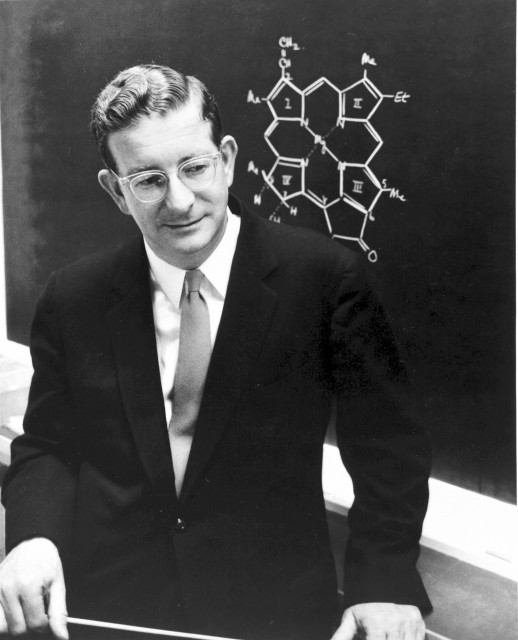Robert Burns Woodward
1917-1979

Robert Burns Woodward was the foremost synthetic organic chemist of his time. He had an understanding of the behavior of organic molecules based upon a wide-ranging knowledge of the chemical literature, a prodigious memory and an extraordinary ability to organize his knowledge in terms of reaction mechanisms and theories of molecular structure. Among his achievements in synthesis were cholesterol and cortisone (1951), lanosterol, strychnine and lysergic acid (1954), reserpine (1956), chlorophyll (1960), tetracyclines (1962), colchicine (1963), cephalosporin C (1965) and vitamin B12 (1972). Famed for their complexity, these synthetic targets were achieved with subtlety in strategic planning, resourcefulness in the face of obstacles, and deft stereochemical control. It is not surprising that the 1965 Nobel Prize was awarded to Robert Burns Woodward for his "meritorious contributions to the art of organic synthesis".
Woodward's analytical skill and mechanistically oriented approach allowed him to solve many of the great structural problems of his day. The breathtaking catalog includes penicillin (1945), strychnine (1948), patulin (1949), terramycin and aureomycin (1952), cevine (1954), magnamycin (1956), gliotoxin (1958), oleandomycin (1960), streptonigrin (1963), and in 1964, the famous puffer-fish derived tetrodotoxin.
Sponsor: Rawle Hollingsworth
Location in chemistry building: Fifth Floor; Elevator area East Wall; Sequence 1
Source: Harvard University Archives